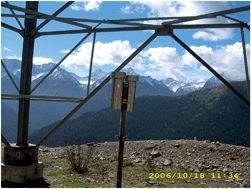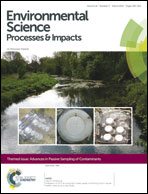Cluster analysis of passive air sampling data based on the relative composition of persistent organic pollutants†
Abstract
The development of passive air samplers has allowed the measurement of time-integrated concentrations of persistent organic pollutants (POPs) within spatial networks on a variety of scales. Cluster analysis of POP composition may enhance the interpretation of such spatial data. Several methodological aspects of the application of cluster analysis are discussed, including the influence of a dominant pollutant, the role of PAS duplication, and comparison of regional studies. Relying on data from six regional studies in North and South America, Africa, and Asia, we illustrate here how cluster analysis can be used to extract information and gain insights into POP sources and atmospheric transport contributions. Cluster analysis allows classification of PAS samples into those with significant local source contributions and those that represent regional fingerprints. Local emissions, atmospheric transport, and seasonal cycles are identified as being among the major factors determining the variation in POP composition at many sites. By complementing cluster analysis with meteorological data such as air mass back-trajectories, terrain, as well as geographical and socio-economic aspects, a comprehensive picture of the atmospheric contamination of a region by POPs emerges.

- This article is part of the themed collection: Advances in Passive Sampling of Contaminants

 Please wait while we load your content...
Please wait while we load your content...